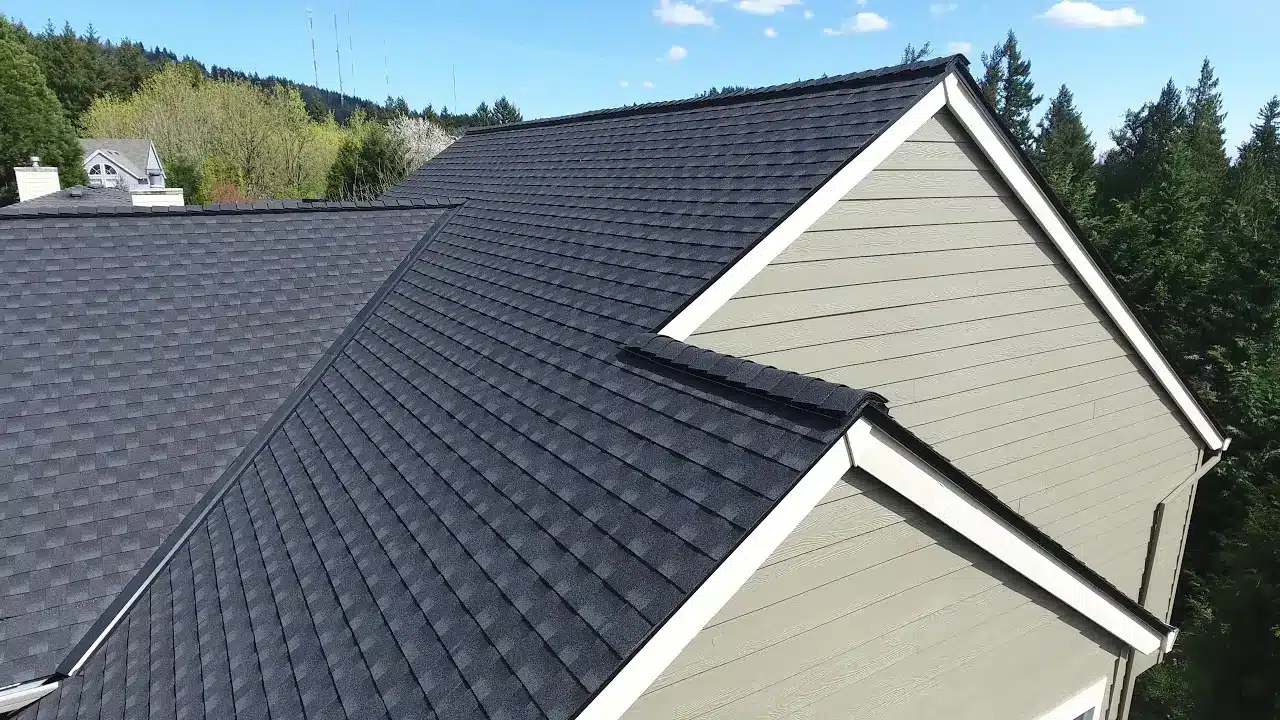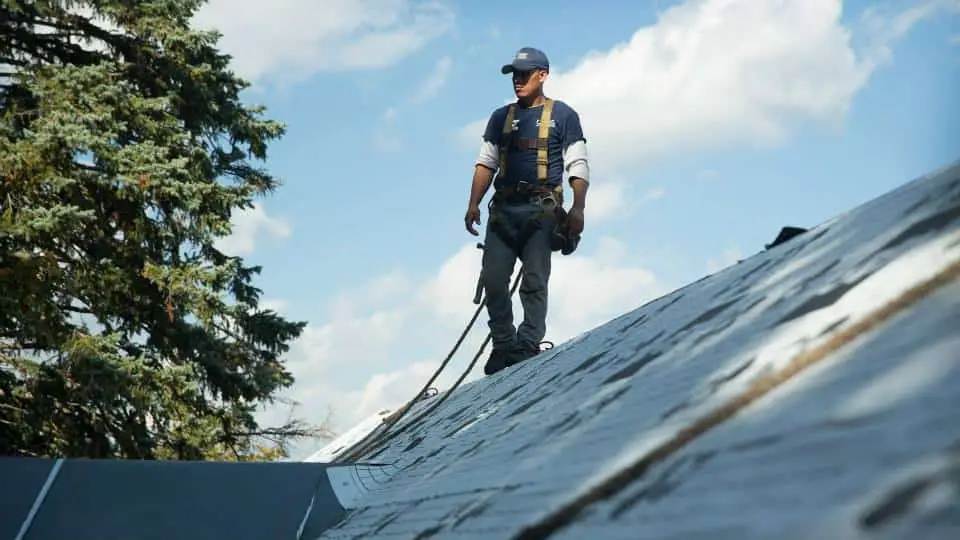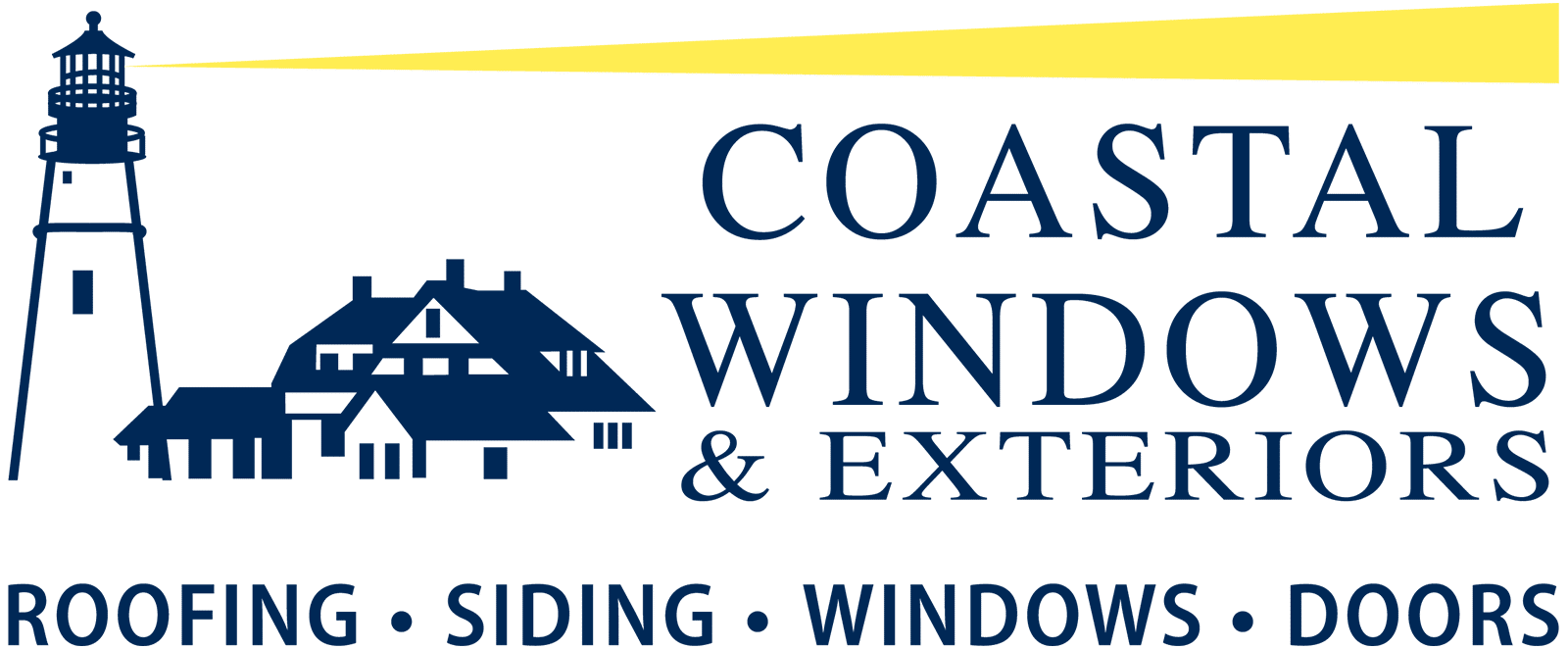When it’s time to get in touch with local roofing contractors in Massachusetts or throughout New England, you might come across some new roofing terminology that leaves you feeling overwhelmed. But the good news is that it’s easy to master the roofing basics of roofing terminology, even when this is your first time inquiring about roof installation!
Roofing is more than just shingles on a roof–it’s a comprehensive system involving various components. Let’s start our roof terminology guide with the most visible aspect: the shingles.
Roofing Shingles
Roofing shingles are the first line of defense against the elements. Without durable shingles, rain, snow, and wind can easily infiltrate your attic, causing temperature fluctuations and increased utility bills.
The Role of Roofing Shingles
Roofing shingles are the outermost layer of your roof, directly exposed to weather conditions here in New England. They protect the underlying roof structure from issues such as:
- Moisture: Preventing water from seeping into the attic, which can cause rot, mold, and structural damage.
- UV rays: Shielding the roof deck from harmful ultraviolet radiation, which can degrade roofing materials and reduce their lifespan.
- Physical damage: Resisting impacts from hail, branches, and other debris that can puncture or crack the roof, compromising its integrity.
Meanwhile, durable shingles ensure your attic space remains insulated while maintaining a stable temperature.
What are Ridge Vents?
When it comes to roofing structure terms, you’ll hear a lot about vents. Ridge vents are an essential component of a well-ventilated attic. They help prevent rot and maintain the integrity of your roof deck.
Ridge vents allow hot, humid air to escape from your attic, reducing the risk of mold growth and rot. Proper ventilation prevents excessive heat buildup, which can damage roofing materials and lead to higher energy costs. A well-ventilated attic also protects your possessions from mildew damage and reduces the risk of ice damming during winter.
Enhancing Energy Efficiency
With improved airflow in the attic, ridge vents are a cost-effective solution for maintaining a comfortable and energy-efficient home. It’s all possible when you work with local roofing contractors!
What Are Gable Vents?
Gable vents are not only functional but also add architectural interest to your home. Typically installed in areas where two slopes of the roof form a triangle, gable vents facilitate airflow, helping to remove hot air and moisture from your attic.
This ventilation further prevents mold growth and protects the structural integrity of your roof. In addition to their functional benefits, gable vents can enhance the visual appeal of your home, providing a balanced look to your roofline.
What Are Soffit Vents?
Soffit vents are installed on the underside of your home’s eaves while encouraging ventilation. These vents block wind-driven rain and moisture from entering the attic, which is particularly important in coastal areas like New England. Moisture control is key to preventing mold growth and maintaining the structural integrity of your roof.
Once air enters through the soffit vents, it circulates through the attic and exits via other roof vents. This continuous airflow helps the attic “breathe,” maintaining a balanced temperature and reducing the risk of ice dams in winter. Soffit vents are especially beneficial in cold climates, where proper ventilation prevents warm air from melting snow on the roof, which can lead to ice damming.

What is Roof Deck Protection?
Roof deck protection is an additional layer that shields your home from water infiltration and weather damage. By preventing water from infiltrating the roof, it protects the attic insulation and prevents rot in the roof structure. This added layer of defense ensures that your roof remains durable and energy-efficient.
A well-protected roof deck can withstand harsh weather conditions, prolonging the life of your roofing materials. Keep in mind that quality roofing can last you 50 years or longer, especially with a transferable lifetime warranty!
This protection helps maintain the structural integrity of your home, reducing the need for frequent repairs and lowering long-term maintenance costs.
What is Metal Roofing?
Metal roofing is renowned for its durability and longevity, making it an excellent choice for various climates. They perform exceptionally well on steep roofs and can last up to 70 years with proper maintenance. Metal roofing is resistant to rot, insect damage, and fire, providing a robust and long-lasting roofing solution.
Furthermore, metal roofs are available in a wide range of colors, enhancing the aesthetic appeal of both traditional and modern homes. Whether you live in a colonial-style house or a contemporary home, metal roofing offers practical benefits and visual appeal.
What are Asphalt Shingles?
Asphalt shingles are one of the most widely used roofing materials due to their versatility and affordability. They’re suitable for various roof pitches and slopes, making them a flexible option for different home styles. They are easy to install, which can reduce labor costs and shorten the installation time.
Meanwhile, modern asphalt shingles are designed for energy efficiency and durability. They perform well in wet and icy conditions and are engineered to resist algae and moss growth. With proper installation and maintenance, asphalt shingles can provide reliable protection and energy savings for many years.
What are Solar Shingles?
Solar shingles offer a modern twist on traditional roofing materials, integrating seamlessly with your roof while generating solar power.
Here’s what makes them an attractive option:
Solar shingles capture sunlight and convert it into electricity, providing a renewable energy source for your home. In fact, you can save over 100% of your home’s energy bill with solar shingles, especially in Massachusetts.
They are particularly effective on roofs with good southern exposure and an optimal pitch for sunlight. Even in variable weather conditions, solar shingles can generate significant energy savings.
Unlike traditional solar panels, solar shingles are designed to blend with your roof, maintaining the aesthetic integrity of your home. They offer a sleek, unobtrusive look that complements the architectural style of your home while providing the benefits of solar energy.

Even More Roofing Terminology
There are other elements of a roof that is helpful to know during your roof replacement journey. More of the most common roofing terminology is found below!
Flashing
Flashing is a material, usually metal, installed at roof intersections, edges, and valleys to prevent water infiltration. Local roofing contractors rely on flashing to prevent leaks. It is essential for sealing areas where the roof meets walls, chimneys, or skylights.
Underlayment
Underlayment is a protective layer installed beneath shingles. It serves as an additional barrier against water and wind, providing extra protection for the roof deck.
For example, GAF Tiger Paw Underlayment is a high-performance synthetic material designed to provide superior protection for your roof. Unlike traditional felt underlayment, Tiger Paw is resistant to tearing and provides a durable, breathable layer that helps prevent moisture buildup under shingles.
This advanced underlayment enhances the overall longevity and efficiency of your roofing system by offering an extra barrier against water infiltration, wind-driven rain, and other environmental hazards. Its superior traction surface also ensures safer installation for roofing professionals, making it a preferred choice for New England homeowners.
Drip Edge
Drip edge is a metal strip installed along the roof edges. It directs water away from the fascia and into the gutters, preventing water damage and prolonging the life of the roof.
Roof Valley
Roof valleys are the areas where two roof planes meet. Proper installation and sealing of valleys are crucial to ensure efficient water runoff and prevent leaks.
Ice and Water Shield
Ice and water shield is a self-adhering membrane applied to roof eaves, valleys, and other vulnerable areas. It prevents water infiltration caused by ice dams and wind-driven rain.
Roof Eaves
Eaves are the lower edges of the roof that overhang the exterior walls. They help direct water away from the building and provide ventilation openings for the attic.
Fascia
Fascia is the vertical finishing edge connected to the ends of the roof trusses. It supports the lower edge of the roof and holds the gutters in place.
Roof Pitch
Roof pitch refers to the steepness of the roof slope. It affects water runoff, the type of roofing materials suitable for the roof, and the overall aesthetics of the home.
Hip Roof
Hip roof is a type of roof where all sides slope downwards towards the walls, usually with a gentle slope. It is more stable and provides better wind resistance.
Get a Free Estimate from Your Local Roofing Contractors
Have more questions about roof structure terms? We can answer all your questions during your fast, free, and friendly estimate. Here in New England, we install roofs all year long. We also have seasonal promotions and financing available! Call us now for a free estimate.


